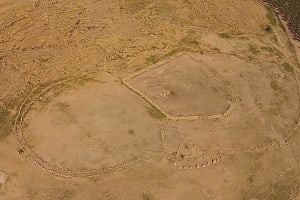New study reveals evidence of 3,000-year-old bronze production site in Samaria

A new study from researchers at the University of Haifa revealed evidence of a 3,000-year-old bronze production site at the El-Ahwat archaeological site in Samaria.
“This is the first definitive evidence that bronze was actively produced in the Land of Israel during the Early Iron Age, not through recycling but as a deliberate manufacturing process in a peripheral hill settlement, not a major city,” said Dr. Tzilla Eshel, according to a Ynet News report.
The study, co-authored by Eshel, was published last week in the peer-reviewed journal PLOS One.
She wrote, “The findings point to an emerging, non-professional industry” in the region.
Examining metal samples from the El-Ahwat site in the Manasseh Hills – about 10 miles east of Caesarea – the study found evidence that established views on metal production in the region during this period should be reconsidered.
“The alloys vary in quality, but it’s clear this was an intentional effort to produce bronze on-site, a remarkable discovery that forces us to rethink the economy and social organization of the Iron Age,” Eshel wrote.
The study concluded that El-Ahwat “was part of a broader socio-economic network that linked copper-producing regions in the Arabah with bronze-manufacturing centers further north.”

The All Israel News Staff is a team of journalists in Israel.
You might also like to read this:
















